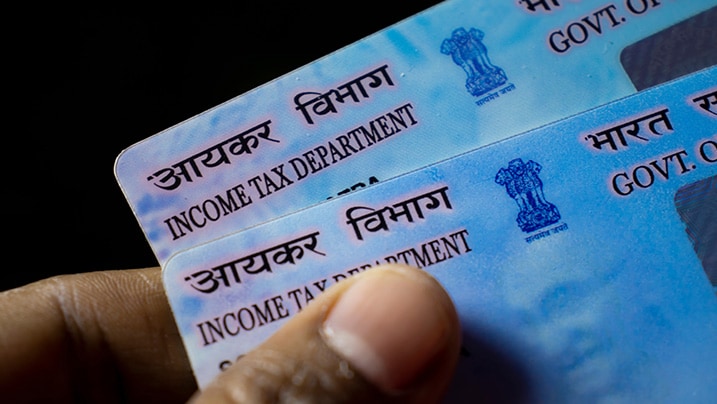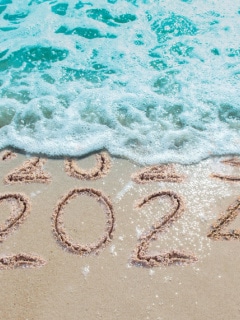CKYC Registry
-
Customer Service Contact us Service request Locate a branch
Find all the help you need
Scan the QR, get our app, and find help on your fingertips

Help CenterSupport topics, Contact us, FAQs and more
-
Login
Are you ready for an upgrade?
Login to the new experience with best features and services
-
Login
Are you ready for an upgrade?
Login to the new experience with best features and services
- Accounts
-
Deposits
IDFC FIRST Bank Deposits
View all Deposits -
Loans
IDFC FIRST Bank Loans
View all Loans - Wealth & Insure
-
Payments
IDFC FIRST Bank Payments
View all Payments -
Cards
IDFC FIRST Bank Cards
View all Cards - Blogs
- Corporate Account
-
Cash Management Services
IDFC FIRST Bank Cash Management Services
View all Cash Management Services - Supply Chain Finance
-
Corporate Lending
IDFC FIRST Bank Lending
View all -
Treasury
IDFC FIRST Bank Treasury
See more details - NBFC Financing
Support topics, Contact us, FAQs and more
- IDFC FIRST Bank Accounts
-
Savings Account
-
Corporate Salary
Account -
Senior Citizens
Savings Account -
First Power
Account -
Current Account
-
NRI Savings
Account -
TASC Institutional
Account -
Savings Account
Interest Calculator
- IDFC FIRST Bank Deposits
-
Fixed Deposit
-
Recurring Deposit
-
NRI Fixed Deposit
-
Safe Deposit Locker
-
FD Calculator
-
RD Calculator
- IDFC FIRST Bank Loans
-
Personal Loan
-
Consumer Durable
Loan -
Home Loan
-
Business Loan
-
Professional Loan
-
Education Loan
-
New Car Loan
-
Pre-owned Car Loan
-
Two Wheeler Loan
-
Pre-owned Two
Wheeler Loan -
Commercial Vehicle
Loan -
Gold Loan
-
Loan Against Property
-
Loan Against Securities
-
Easy Buy EMI card
-
Personal Loan
EMI Calculator -
Education Loan
EMI Calculator -
Home Loan
EMI Calculator
- IDFC FIRST Bank Wealth & Insure
-
FIRST Select
-
FIRST Wealth
-
FIRST Private
-
Mutual Funds
-
Sovereign Gold Bond
-
Demat Account
-
Term Insurance
-
Life Insurance
-
Health Insurance
-
General Insurance
-
Bonds
-
Loan Against
Securities -
Portfolio Management
Service
- IDFC FIRST Bank Payments
-
FASTag
-
Credit Card
Bill Payments -
UPI
-
Funds Transfer
-
Forex Services
-
Pay Loan EMI
- IDFC FIRST Bank Cards
-
Ashva :
Metal Credit Card -
Mayura :
Metal Credit Card -
FIRST Millennia
Credit Card -
FIRST Classic
Credit Card -
FIRST Select
Credit Card -
FIRST Wealth
Credit Card -
FIRST WOW!
Credit Card -
Deals
-
Debit Cards
-
Co-branded Cards
-
Credit Card
EMI Calculator -
FIRST Corporate
Credit Card -
FIRST Purchase
Credit Card -
FIRST Business
Credit Card
- Premium Metal Credit Cards
-
AshvaLifestyle1% Forex₹2,999
-
MayuraLifestyleZero Forex₹5,999
-
FIRST PrivateInvite Only
- Best for travellers
-
MayuraZero ForexMetal₹5,999
-
Ashva1% ForexMetal₹2,999
-
FIRST WOW!Zero ForexTravelLifetime Free
-
FIRST SWYPTravel OffersEMI₹499
-
FIRST Select1.99% ForexLifestyleLifetime Free
-
FIRST Wealth1.5% ForexLifestyleLifetime Free
-
Club VistaraTravelLifestyle₹4,999
-
IndiGo IDFC FIRST Dual Credit CardTravelLifestyle₹4,999
- Max benefits, Free for life
-
FIRST Classic10X RewardsShoppingNever Expiring Rewards
-
FIRST Millennia10X RewardsShoppingNever Expiring Rewards
-
FIRST Select10X RewardsLifestyle1.99% Forex
-
FIRST Wealth10X RewardsLifestyle1.5% Forex
-
FIRST WOW!RewardsTravelZero Forex
-
LIC ClassicRewardsInsuranceShopping
-
LIC SelectRewardsInsuranceShopping
- Reward Multipliers
-
AshvaLifestyleMetal₹2,999
-
MayuraLifestyleZero Forex₹5,999
-
FIRST ClassicNever Expiring RewardsShoppingLifetime Free
-
FIRST MillenniaNever Expiring RewardsShoppingLifetime Free
-
FIRST SelectNever Expiring RewardsLifestyleLifetime Free
-
FIRST WealthNever Expiring RewardsLifestyleLifetime Free
- Rewards & Credit on UPI
-
FIRST Power+FuelUPI₹499
-
FIRST PowerFuelUPI₹199
-
FIRST EA₹NVirtual1% Cashback₹499
-
FIRST DigitalVirtualUPI₹199
-
IndiGo IDFC FIRST Dual Credit CardUPITravelDual cards
- Fuel and Savings
-
FIRST PowerRewardsUPI₹199
-
FIRST Power+RewardsUPI₹499
-
LIC ClassicRewardsInsuranceShopping
-
LIC SelectRewardsInsuranceShopping
- Express and Flaunt
-
AshvaMetal1% Forex₹2,999
-
MayuraMetalZero Forex₹5,999
-
FIRST SWYPEMIOfferMAX₹499
-
FIRST MillenniaRewardsShoppingLifetime Free
- FD Backed rewarding Credit Cards for all
-
FIRST EA₹NVirtualCashback₹499
-
FIRST WOW!Zero ForexTravelLifetime Free
-
CreditPro Balance TransferTransfer & SaveReduce InterestPay Smartly
- IDFC FIRST Bank NRI Forex Solutions
-
Send money to India-Wire transfer
-
Send money to India-Digitally
-
Send money abroad
-
Max Returns FD (INR)
- IDFC FIRST Bank MSME Accounts
-
Platinum Current
Account -
Gold
Current Account -
Silver Plus
Current Account -
Merchant Multiplier
Account -
Agri Multiplier
Account -
TASC Institutional
Account -
Dynamic Current
Account -
World business
Account -
First Startup
Current Account
- IDFC FIRST Bank Business Loans
-
Business Loan
-
Professional Loan
-
Loan Against Property
-
Business Loan for Women
-
Working Capital Loan
-
Construction Equipment Loan
-
Machinery Loan
-
Healthcare Equipment Loan
- IDFC FIRST Bank Business Solutions
-
Payment Solutions
-
Tax Payments
-
Doorstep Banking
-
Point of Sale (POS)
-
Escrow Accounts
-
NACH
-
Payment Gateway
-
UPI
-
Virtual Accounts
-
As per amendment in the Income Tax Rules, PAN or Aadhaar are to be mandatorily quoted for cash deposit or withdrawal aggregating to Rupees twenty lakhs or more in a FY. Please update your PAN or Aadhaar. Kindly reach out to the Bank’s contact center on 1800 10 888 or visit the nearest IDFC FIRST Bank branch for further queries.
-
-
Most Searched
Sorry!
We couldn’t find ‘’ in our website
Here is what you can do :
- Try checking the spelling and search
- Search from below suggestions instead
- Widen your search & try a more generic keyword
Suggested
Get a Credit Card
Enjoy Zero Charges on All Commonly Used Savings Account Services
Open Account Now
It is a must for Indian citizens to present certain documents to verify their identity. A PAN card is a common identity document which can come handy in many situations.
What is a PAN card?
PAN stands for Permanent Account Number. It is an alphanumeric, 10-digit identification number unique to every individual. It is issued by the Income Tax (IT) Department of India and contains a PAN number and the cardholder's name, date of birth, and photograph. Banks and other institutions use PAN cards to verify an individual's identity and offer different banking products.
READ MORE
What is the importance of a PAN card?
A PAN card is needed in the following situations:
- When purchasing a new vehicle.
- When opening an account or investing with a financial service. Fixed deposits (FDs) also require PAN card information for deposits over ₹50,000 or more.
- To apply for a credit card.
- To open a Demat account with any depository or custodian of securities registered with the Securities Exchange Board of India (SEBI).
- For payments of more than ₹50,000 made in cash.
- For cash deposits of more than ₹50,000 made with banks within one day.
- For payments of more than ₹50,000 in life insurance premiums to the insurer in any financial year.
- For any transaction involving the purchase or sale of securities (other than shares) over ₹1,00,000.
- When an unlisted company's shares are bought and sold for more than ₹1,00,000 per transaction.
- For the purchase and sale of any immovable property worth more than ₹10,00,000, or if a stamp valuation body values it at a sum greater than ₹10,00,000.
- For the purchase and sale of products or services other than residential property.
- PAN information needs to be submitted to cellular companies for a new phone or mobile connection.
- PAN card information is mandatory to purchase jewellery worth more than ₹5,00,000.
If a person who does not have a PAN Card engages in these activities, they must file a declaration in Form 60.
How to apply for a PAN card?
You can apply for a PAN card online or offline. Here is how you can do it online:
- Visit the NSDL or UTIITSL's official website.
- Find the PAN registration form and fill it out completely.
- Submit the essential documentation along with two passport-size photos.
- Make the required payment.
- Within 15 days, your PAN card will be delivered to your registered address.
The offline process is not as convenient, but you can exercise the option if you want to. Follow the below steps to apply for a PAN card offline:
- Visit a recognised PAN centre.
- Fill out the PAN application form and submit two passport-size pictures.
- Attach your supporting documents and pay the processing fees.
- Within 15 days of submitting your application, you will receive your PAN card.
A PAN card is a vital document you need for almost everything. Fortunately, it is easy to apply for and receive a PAN card. The online process is easier and less time-consuming than the offline method.
Since the PAN is unaffected by changes in address or job profile, it can be used forever as a form of identification.
Types of PAN Cards
Depending on the type of taxpayer, the Government of India issues different types of PAN cards to the citizens. Following are the type of PAN cards usually issued by the Indian Government.
- PAN Card for Indian citizen
- PAN Card for Indian companies
- PAN Card for foreign citizens
- PAN card for foreign organisations
PAN card issued to citizens is different from those issued to companies and business entities. For instance, the PAN card for citizens consists of a PAN number, name, parent’s name, photograph, signature, date of birth, hologram, and a QR code. The PAN card issued to an organisation consists of a PAN number, the company’s name, date of registration, hologram and QR code. It does not contain a photo or signature as it does in a PAN card for citizens.
Documents required to apply for a PAN card
Again, based on the type of applicant, different sets of documents are required as per Form 42A and 42AA. The following are the required documents to apply for a PAN card.
Documents required for citizens
- For Individual applicant
- Identity proof such as Aadhaar, Driving License, Passport, etc.
- Proof of address such as utility bill, voter card, bank statement, credit card statement, domicile certificate etc.
- For Hindu Undivided Family (HUF)
- An affidavit issued by the Karta of HUF. It must include the name, address, and the coparcener’s father’s name.
- In case you belong to HUF and applying individually, you must submit identity and address proof, including the birth certificate.
- For foreign citizens
- Identity proof, such as a copy of the PIO and OCI issued by the Indian Government or passport, etc.
- Proof of address such as a bank statement of NRE account or the statement of bank account in the resident country, a Copy of a Visa granted by an Indian company, or a registration certificate issued by a FRO.
Documents for companies in India
- Companies registered in India
- Registration certificate copy issued by the registrar of the company
- Firms and LLPs registered or formed in India
- Registration certificate copy issued by the registrar of the company
- A copy of the partnership deed
- Trusts registered and formed in India
- A copy of the registration certificate number issued by a charity commissioner
- For the Association of Persons
- A copy of the agreement, registration certificate issued by the charity commissioner or registrar of the cooperative society, or a government-issued document that mentions the identity and addresses clearly.
Cost of PAN card
You can easily apply for a PAN card online by visiting the UTITSL portal or the NSDL portal and get your e-PAN card within a couple of hours. You must the application and processing fee at the time of PAN card application. The cost of getting a PAN card is as follows.
- For an India communication address, you need to pay ₹93 excluding the GST cost.
- For a communication address outside of India, you must pay ₹864 excluding the GST cost.
Uses and benefits of PAN card
For taxpayers and individuals availing of various financial and government services, a PAN card is an important document. It helps the governing body to track all monetary transactions happening in the country. In fact, it is required while filing income tax returns, receiving tax returns, and other communications from Income Tax Department. Along with being an important identity proof, a PAN card has several uses and benefits as mentioned below.
Uses of PAN card
- You need a PAN card while paying all kinds of direct taxes
- Employees and workers need a PAN card to file their income tax
- If you are registering a business, PAN is one of the important documents that you must submit
- You need a PAN card for availing of various banking and financial services, such as opening a bank account and investing money in mutual funds and stocks
Key benefits of using a PAN card
- Since your PAN card contains photo ID proof, name, date of birth etc., it is an acceptable identity proof across the country in any organisation
- It helps you track and verify your tax payments
- PAN is uniquely issued to different entities, so it becomes impossible to evade taxes or misuse it for any illegal purposes
- You can use a PAN card to apply for electricity, gas, and water connections, including applications for various financial products.
Who should get a PAN card? - Eligibility for a PAN card?
PAN is a crucial document so individuals and entities performing financial transactions must have it. According to Section 139A of the Income Tax Act, the following taxpaying entities must hold a PAN card.
- Any entity that has paid or is liable to pay taxes must hold a PAN card.
- An individual involved in business or trade activity that earns an annual turnover of ₹5 lakhs or above in an assessment year must have a PAN card
- All types of trusts, charitable organisations, and associations much hold a PAN card
- Exporters and importers liable for taxes and duties according to the prevailing tax laws must hold a PAN card.
- Additionally, any forms of associations, entities, individuals, and HUF, must apply for a PAN card.
Tracking PAN transactions
ITBAN-PAN (Income Tax Business Application-Permanent Account Number) is a recently launched program to track all the payments made through a PAN card. It helps tax authorities to track and calculate taxes on all monetary transactions made using a specific PAN card.
All financial transactions such as acquisitions, liquidations, mergers, dissolution, and amalgamation of PAN can be tracked where a specific PAN card is used. All existing PAN information and the database have also been transferred to ITBAN-PAN.
What happens if you don’t have a PAN card?
If an individual falls under the taxable income slab and does not hold a valid PAN card, it would event to a –
- flat 30% tax deduction on your earning and wealth accumulation as per the IT Act. The rule applies to all the categories of individuals, associations, companies, and entities liable for tax payments, including foreign nationals and entities.
- An individual with taxable income not holding a valid PAN card cannot purchase a vehicle or property worth more than ₹10 Lakhs or open a bank account or perform a financial transaction.
- Businesses will not be able to perform a large fraction of transactions without a valid PAN card.
How to make changes to a PAN card?
To make corrections or update your PAN card details online, follow the quick and easy steps mentioned below.
- Visit the official site of NSDL
- You can find the ‘Changes or Correction in existing PAN Data/ Reprint of PAN Card (No changes in existing PAN Data)’ option on the webpage. Choose it and proceed further
- You will find an online form prompting you to enter relevant details, fill out all the details and click on the ‘Submit’ button.
- You will receive a token number for your update request.
- Subsequently, click on ‘Continue with PAN Application Form’,
- Fill out all the relevant details in the form.
- Choose the way wish to submit the application form.
- Then, choose the type of PAN.
- Enter your contact details.
- Subsequently, upload all the relevant documents.
- Click on ‘Submit’.
- Make the payment of the processing fee to complete the update request.
What do alphabets and numbers on your PAN card mean?
A PAN card consists of an alphanumeric code unique to each PAN card. The first 3 characters are random alphabets starting from AAA to ZZZ followed by a fourth alphabet that denotes the status of the applicant as mentioned below.
- "P" stands for Individual
- "C" stands for Company
- "H" stands for Hindu Undivided Family (HUF)
- "A" stands for Association of Persons (AOP)
- "B" stands for Body of Individuals (BOI)
- "G" stands for Government Agency
- "J" stands for Artificial Juridical Person
- "L" stands for Local Authority
- "F" stands for Firm/ Limited Liability Partnership
- "T" stands for Trust
The fifth character is an alphabet that denotes the first letter of the applicant’s last name (in the case of an individual applicant). If the applicant is a non-individual, the fifth character is the first letter of the cardholder’s name. The next 4 characters are numbers running from 0001 to 9999 and the 10th character is an alphabet check digit.
PAN for eKYC
PAN card and Aadhar linking is a necessary process to be undertaken for availing financial services and benefits from various organisations. The e-KYC process is mandatory for all banking and financial transactions and PAN card helps both consumers and the Government to make KYC easy and convenient for the following reasons.
- Quick and Paperless process – PAN cardholders can seamlessly share their details over a secure channel online and eliminate the hassles of long waiting time taken in physical verification.
- Secure – Confidential information shared between the user and service provider remains tamper-proof over a secured channel. The documents transferred over the secured network are forge-proof and cannot be used without the consent of the user or the service For Individual applicantprovider.
- Authenticated and Authorised – E-KYC information is authenticated data and can be used for legal purposes among the parties involved.
- Cost-effective – The entire e-verification process is completely paperless and since no physical movement of information takes place, the process is cost-effective and saves time.
Frequently Asked Questions
What is the validity of a PAN card?
Once issued, a PAN card is valid for a lifetime. The Permanent Account Number remains the same for an individual for the entire lifetime.
Can I correct my PAN card after it has been issued?
Yes, you can correct your PAN card details by visiting the official portal of NSDL. After entering all the correct details, pay the processing fee to complete the update request.
Can I hold more than one PAN card?
No, you cannot hold more than one PAN card. Holding multiple PAN cards is a punishable offence and you can be charged a penalty of ₹10,000 under Section 272B of the Income Tax Act 1961.
What are the charges for applying for a new PAN card?
When applying for a fresh PAN card, you must an application fee depending on your citizenship and residence.
- An individual with an address within the boundary of India needs to pay ₹93 (application fee) + 18% GST.
- An individual with an address outside the geographical boundary of India needs to pay ₹93 (application fee) + ₹771 (dispatch charges) + 18% GST.
Do I get any proof of application for my PAN card?
Yes, after the successful application, you will receive a 15-digit acknowledgement letter.
Disclaimer
The contents of this article/infographic/picture/video are meant solely for information purposes. The contents are generic in nature and for informational purposes only. It is not a substitute for specific advice in your own circumstances. The information is subject to updation, completion, revision, verification and amendment and the same may change materially. The information is not intended for distribution or use by any person in any jurisdiction where such distribution or use would be contrary to law or regulation or would subject IDFC FIRST Bank or its affiliates to any licensing or registration requirements. IDFC FIRST Bank shall not be responsible for any direct/indirect loss or liability incurred by the reader for taking any financial decisions based on the contents and information mentioned. Please consult your financial advisor before making any financial decision.
The features, benefits and offers mentioned in the article are applicable as on the day of publication of this blog and is subject to change without notice. The contents herein are also subject to other product specific terms and conditions and any third party terms and conditions, as applicable. Please refer our website www.idfcfirstbank.com for latest updates.























